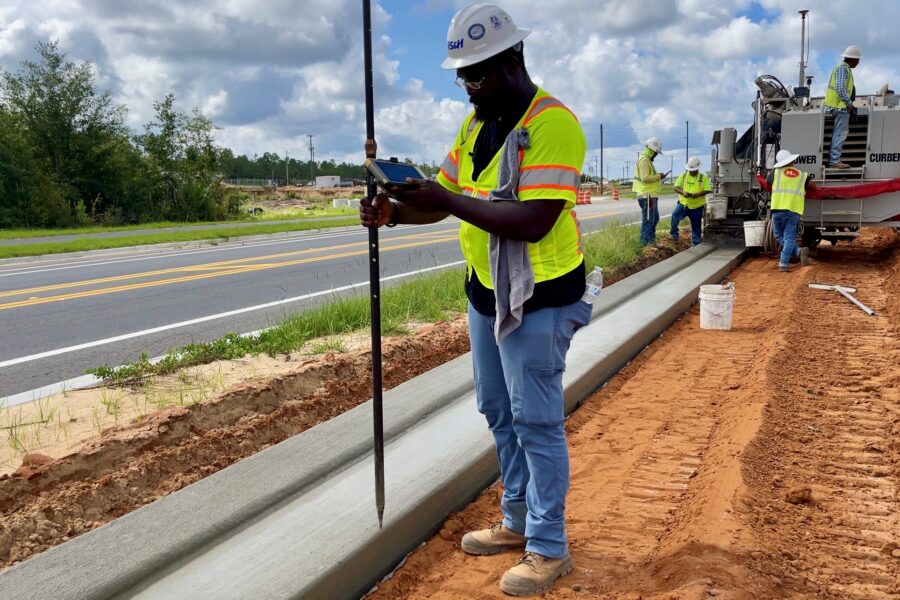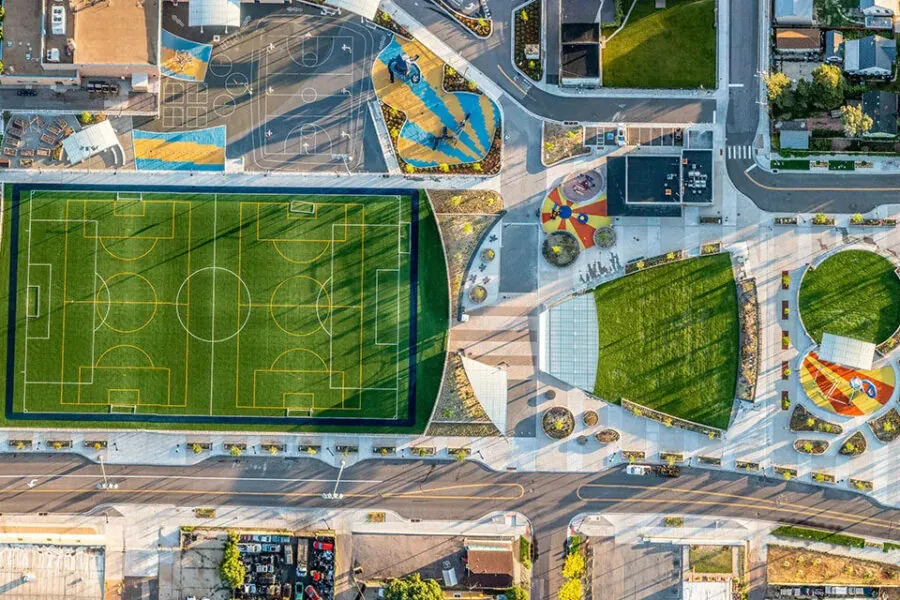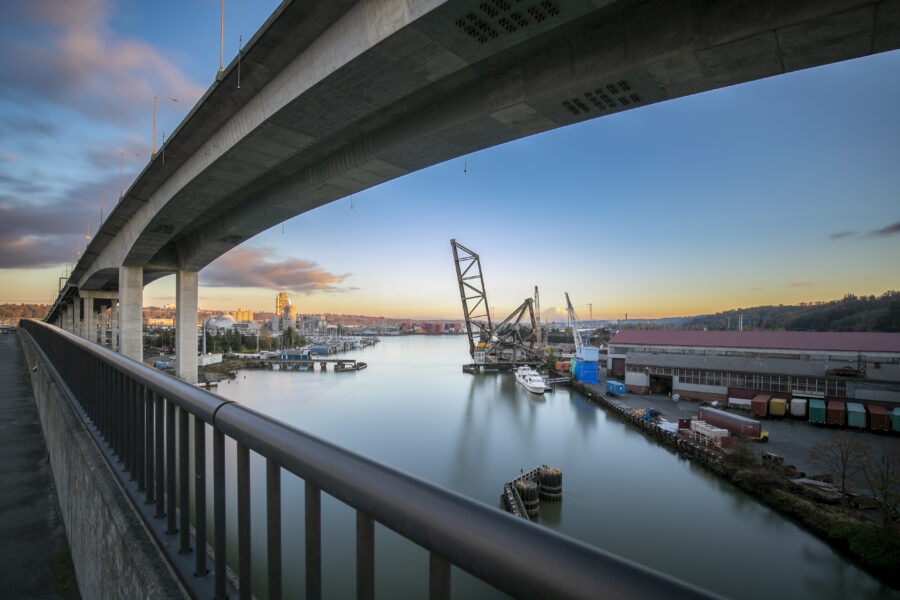Creating Connected Communities with Transportation Infrastructure

If our projects are not helping the communities we work in, what’s the point of building what we build?
It’s a question I regularly ask myself and our project teams. It’s the reason I enjoy the work I do. Our ideas and actions have a tremendous ability to connect people and places and improve the communities where we live and work.
Connecting communities is increasingly becoming a top priority at the federal and state level. One of the outcomes of the Bipartisan Infrastructure Law (BIL) was the Reconnecting Communities Pilot Program. This is the first federal program dedicated to reconnecting communities that were previously cut off from economic opportunities by transportation infrastructure. State departments of transportation (DOTS) are also creating programs that are dedicated to increasing community connections. For instance, the Washington State Department of Transportation’s Connecting Washington initiative. A 16-year program designed to preserve Washington’s highway system, reduce congestion and support multimodal solutions like bike lanes and ferries.
By preserving existing infrastructure and planning for future projects with connection and sustainability in mind, we can do many things to create a connected, thriving community.
What is a Connected Community?
In terms of transportation infrastructure, a connected community means residents can safely and conveniently meet their daily needs. For a community to truly feel connected it’s important to offer a variety of safe transportation options like buses, bikes and scooters so everyone within the community has equal access to vital places such as schools, grocery stores and workplaces.
Research suggests that a connected community fosters collaboration, in turn, improving the quality of life of its members allowing everyone to work together for the betterment of each other and the community.
The idea of a connected community seems simple; however, community members can have competing interests and different wants and needs regarding transportation infrastructure. For example, some may feel that investments and updates need to be devoted to public transportation systems while others may voice a need for bike and walking path updates.
Allocating funds to address every available option is often not feasible. However, it’s important to remember that small, thoughtful investments can still positively impact the community. Through planning and design, we can strategically incorporate ways to address common concerns and increase connectivity.
These actions below can help frame and inform decisions for the benefit of the community.
Actions to Take to Create Connected Communities
1. Plan ahead for site-specific solutions
Early investment and identification of opportunities to connect communities are crucial. Even a traditional highway project can serve as a connection by including pedestrian transportation options or even transit stops. It’s always strategic to pull from your past experiences, but you must remember that developing a solution that is specific to a location and community is vital. Challenge your team to keep this thought in mind: how is this project affecting the community? This thought process will keep you and your team thinking about key tools and distinctive ideas throughout the project.
2. Utilize the Envision® rating system
Envision® is a rating system for the planning, design, construction and maintenance of civil infrastructure developed by the Institute for Sustainable Infrastructure (ISI). It consists of a guidance manual that includes 64 sustainability and resiliency criteria broken into 5 categories:
- Quality of Life
- Leadership
- Resource Allocation
- Natural World
- Climate and Risk
Envision® applies to all types of civil infrastructure projects and encourages and rewards sustainable infrastructure design. Although Envision® is not directly related to developing connected communities, its guiding principles relate to many characteristics of a connected community. This rating is not a requirement for most projects; however, it serves as a great guide and also helps incorporate other values that are necessary to support a flourishing community.
3. Encourage Inclusive and Thoughtful Community Engagement
Who better to help you understand the needs and challenges of the community than the members of the community themselves? Before infrastructure plans are developed, reach out to the community and ask what changes will help to improve their standard of living.
To encourage participation, meet people where they are, and provide equitable opportunities for feedback. Some people may want to write an email or a postcard, and others may want to speak to someone face to face. Utilize online options where people can review potential improvements and provide comments. Go out in the community, set up tents and displays, and ask for input. Homeowner association meetings, church events and farmer’s markets are all great places to go out and engage with the community.
A key part of community engagement is not having a predetermined solution when you reach out to the community. This ensures that you are genuinely listening to the community’s input and what improvements they want to see. You’ll usually want to have multiple touchpoints with the community. Use these touchpoints as follow-ups to show the community members that you took their feedback and have built upon their suggestions.
Real World Implementation
RS&H was part of the consultant team that completed the Grand Avenue Bridge Replacement in Glenwood Springs, Colorado. For years this bridge replacement was rejected by community members due to beliefs that a new bridge should be relocated out of the city’s downtown or that the existing structure should be preserved. However, RS&H was able to overcome those challenges and created a community-focused design, including a traffic-conscious method of construction.
To overcome community opposition the state utilized a unique delivery method, Construction Manager/General Contractor (CM/GC). This allowed the community to build a relationship with the contractor before construction. Our team dedicated a lot of time to hearing feedback and ensuring community members were involved in project decisions. The team developed and screened 12 major alternatives, which resulted in the project gaining strong stakeholder support.
The project team worked closely with the Glenwood Springs Downtown Development Authority to develop aesthetic treatments that were like the neighboring historic buildings and districts that are on both sides of the bridge. The downtown segment included a plaza beneath the viaduct, which connected and activated the street. The pedestrian bridge incorporated an elevator and stairs to meet ADA requirements while providing vertical clearance for the Union Pacific Railroad tracks.
Based on public feedback, the bridge was completely shut down for a short period of time rather than partially shut down for an extended period. Under typical construction, completion would have taken a year. Instead, with this alternative strategy, the project had a planned shutdown of just 90 days, which most of the community was in favor of.
How RS&H is Partnering with Our Clients
At RS&H, we utilize our teams’ different backgrounds—as project managers, engineers and people, to bring creative, innovative and equitable ideas to the table. We’re willing to ask the hard questions to ensure we provide value so we can work together to build up your community.
We are invested in your community’s infrastructure and want to help build a future that we are all proud of. Connect with our team today to discuss developing site-specific solutions that encourage a thriving community.




